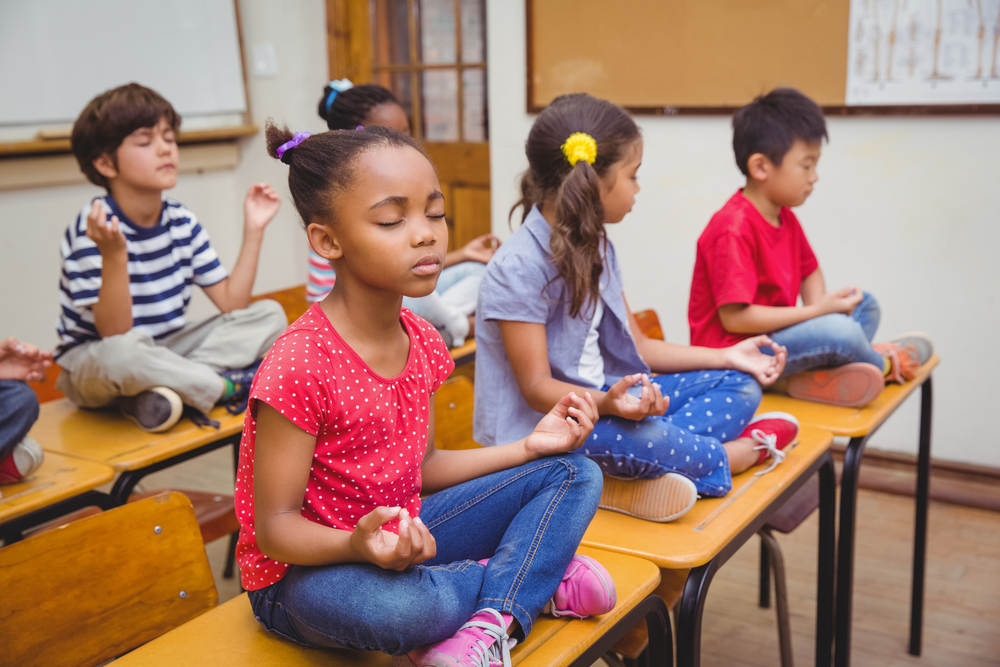Mindfulness is practicing a moment-by-moment awareness of our thoughts, feelings, bodily sensations, and surrounding environment. It’s rooted in Buddhist meditation, but has made a resurgence as a secular application in the American mainstream in recent years. This can be largely traced to the work of Jon Kabat-Zinn and his Mindfulness-Based Stress Reduction (MBSR) program.
This program, launched at the University of Massachusetts Medical School in 1979, has sparked thousands of studies which have documented the physical and mental benefits attributed to mindfulness and the MBSR program. As such, these techniques are being implemented in schools, prisons, hospitals, and clinics around the country.
Kabat-Zinn asserts that mindfulness is related to meditation – or paying attention on purpose. In a presentation given to the Greater Good Science Center, he suggested that when we hear the word mindfulness, “You should understand that it means presence of heart.” Mindfulness is a process of focusing on the present versus rehashing events in the past or planning for the future.
Elementary school teachers, like Argos Gonzalez who teaches teens in one of the poorest districts of New York City, used mindfulness techniques to begin English class. Student sit for 5 minutes and are guided through a mediation exercise to help them focus and become aware of their emotional state. In classrooms like Gonzalez’s, students are dealing with very troubling life circumstances outside of the classroom and using techniques like mindfulness are one way schools are trying to reach troubled students and help them focused more specifically on school.
The approach is capturing attention as advocates such as Mindful Schools offers training for teachers on how to apply mindfulness strategies. Started in 2007, the school believes that incorporating the mindfulness approach at the primary and secondary school level will help teachers address toxic stress and other problems that hinder the educational process.
Daniel Rechtschaffen, Founder of Mindful Education Institute and the Omega Mindfulness in Education conference, works with Mindful Schools primary in the San Francisco area. He believes that through emotional regulation and stress management children can be taught how to pay attention and focus which will in term lead to improved performance in the classroom.
When practicing mindfulness, it’s important to incorporate the following components:
- Pay close attention to your breathing. This is especially important during times of intense emotions.
- Identify anything you are sensing in a given moment. This includes sights, smells, sounds, etc.
- Recognize that anything you are feeling is temporary and does not define you permanently.
- Pay close attention to your body’s physical sensations.

By doing the fours steps mentioned above you can tap into the benefits that a mindful approach to learning can produce. For instance, mindfulness can help with:
- Reducing Negative Motions: Studies show that mindfulness can improve positive emotions and reduce stress. It can be a powerful alternative to antidepressants and fighting depression and preventing relapses.
- Reforming Our Brains: Some studies show that these techniques can increase the gray matter in our brains linked to learning, emotions, and memory.
- Improving Focus: Mindfulness has been shown to help people block out distractions is naturally aids with memory and retention.
- Reducing Behavior Problems: This is a significant benefit in schools because a reduction is behavior problems allows teachers to spend more time focused on teaching the entire class. Less disruptions means that entire class can use class time more productively.
Mindfulness is not a new technique, but new focus is bringing this approach to the forefront. It offers tremendous potential to improve the way we learn, how much we’re able to retain, and how schools and classrooms are managed overall. Research is showing that practicing mindfulness, even for just a few weeks, can bring a variety of physical, psychological, and social benefits that are difficult to ignore.



